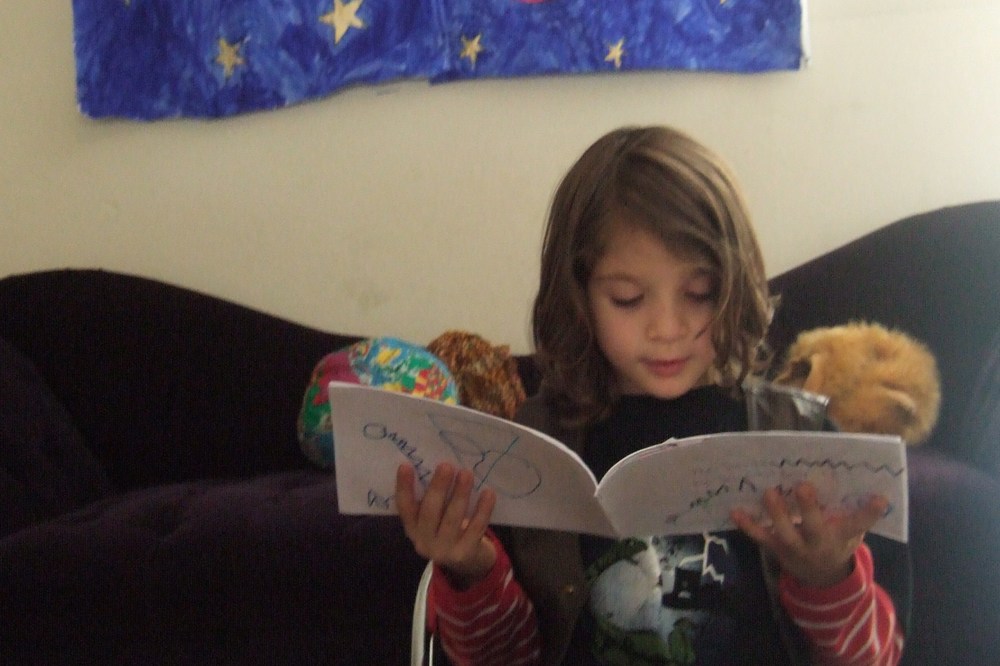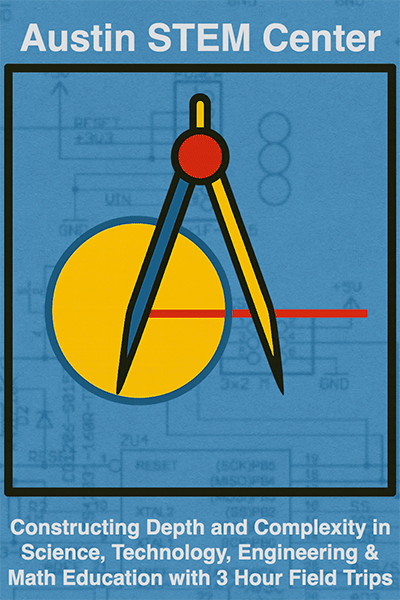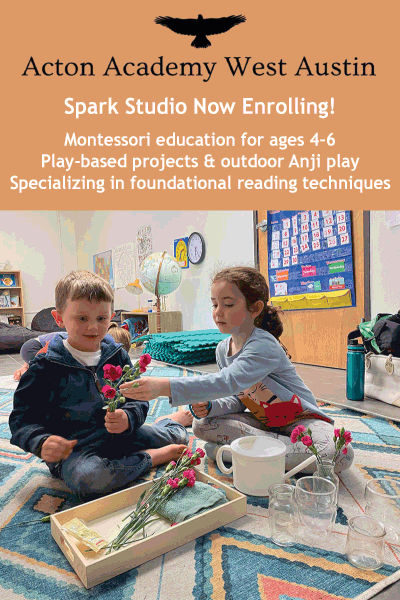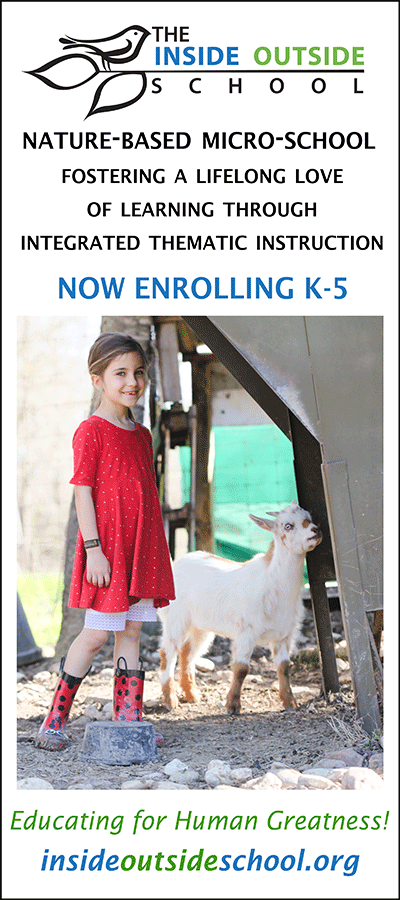You’re never too young for your first draft: A roundup of resources for kids who write
/As National Novel Writing Month, otherwise known as NaNoWriMo, gets into full swing this week, I thought it might be nice to review some of the options out there for kids who love to create lots of words—poetry, short stories, nonfiction, and yes . . . novels! I’m reminded every day that we live in a sort of golden age for young makers of all kinds, including writers. Kids can create their own blogs for free, and even produce books for their friends and family almost for free. They can review books and share their own work via YouTube, Facebook, Wattpad, and other social channels for creators.
Last year we talked about the Austin Public Library Foundation’s Badgerdog writing program, and we really can’t recommend those folks highly enough for their amazing summer workshops and other events throughout the year. This month, the library is holding NaNoWriMo workshops on Wednesday evenings at the drop-dead gorgeous new Central Library, and for younger kids, they’re sponsoring a songwriting workshop on Saturday, November 11, at Twin Oaks Branch Library. Details about both are here.
As for the elephant in a room of its own: the nonprofit Young Writers Program (YWP) is sponsored by the folks who bring the world NaNoWriMo every year. Kids and teens set their own writing goals, often along with a teacher or mentor. Some ambitious young writers over 13 choose to join the adult NaNo community and shoot for the full 50,000-word goal. Both kids and teachers have plenty of tools available, including workbooks that help with character building and plotting, prompts, and community events. Author superstars, including John Green, Daniel José Older, and Jenny Haan provide inspiring pep talks.
When I was looking for an example of a young writer who embraces the spirit of NaNo, Alice Sudlow, an editor at a writer-enabling enterprise called The Write Practice, suggested I check out a 17-year-old writer and super-reader who goes by the name of The Magic Violinist. A homeschooled dynamo, she and her family do NaNoWriMo together every year, and she has written novels, short stories, and hundreds of blog posts about writing and reading. In fact, she just wrote a post to help people find extra time for writing during November. And for skeptics, she explained 4 Reasons NaNoWriMo is Great for Writers. For kids who may feel isolated in the lonely endeavor of putting words on a page, The Magic Violinist praises the community created by NaNo:
Some of my best blogging friends have come from NaNoWriMo, and we keep in touch to this day. It’s hard to go into something like this alone, especially if it’s your first year.
When you sign up, if you sign up, poke around the forums for people who are attempting this for the first time. Strike up a conversation, ask the experts for advice. They’re more than happy to help a newbie out.
The amazing 826 Project is a national nonprofit that celebrates “the power of young voices, the possibility in their ideas, and the value of their words.” Long a community-based project with groups in seven big cities, 826 is affiliated with Austin Bat Cave but does not have an official presence in Austin. We talked about the valuable programs Austin Bat Cave provides for young Austin writers earlier this year, and we encourage everyone to check them out. In addition, the 826 Project recently added a rich digital component to reach more kids, parents, and communities—and this may be especially helpful for homeschooling parents or parents who want to supplement their kids’ school experience with more writing opportunities.
The 826 digital site requires a sign-up and asks for a donation (which you can skip if you’re just looking around and exploring). I like the fact that it includes a variety of skill-building activities that are grouped by age and also by type of writing (informational, persuasive, poetry, etc.). There are lessons built around particular topics and genres and examples of student writing to inspire kids from age 7 or 8 through the teens. For example, Alexa Torres, a Detroit fourth-grader, shared a poem about pizza that she wrote in English and in Spanish:
DELICIOUS PEPPERONI PIZZA
Smells like melted mozzarella cheese.
dripping on the side of the plate.
The pepperoni smells like spicy wasabi.
I can see pepperoni faces that are happy,
and the cheese looks shiny,
the dough peeking out the side.
The crust looks like crazy bread, and it
looks like a long snake.
On my tongue, it feels hot like chips from
the fryer.
When I chew, it sounds like mushy
Tomatoes, squish, squish.
When I eat five pieces, I feel as happy as
when I get presents from Santa.
The pizza feels heavy from the toppings,
and the cheese is like a gray tiny rock.
PIZZA DE PEPPERONI DELICIOSA
Huele como queso derretido de mozzarella
goteando de un lado del plato.
El pepperoni huele como wasabi picoso.
Yo puedo ver caras de pepperoni que están
Felices y el queso se ve brilloso,
la masa asomándose del lado.
El borde parece pan loco y como una serpiente
Larga.
En mi lengua se siente caliente como papas
recién sacadas del sartén.
Cuando lo mastico sueno como tomates
pulposos, squish, squish.
Cuando me como cinco pedazos, me siento tan
feliz como cuando recibo regalos de santa.
La pizza me cae pesada de todos los toppings, y
el queso coma una roca pequeña color gris.
Writer and editor Maya Rushing Walker and her daughter, young writer Allegra Walker, recently appeared on a podcast called Mom Writes, talking about their experience writing novels together and independently. Allegra, who is now 15, has written several novels during NaNoWriMo, the first in elementary school. Allegra is thinking of self-publishing some of her work and is in the process of revising a novel. She publishes now through the Wattpad platform and has a following of devoted readers. The podcast discussion provides an interesting user’s view of Wattpad’s pros and cons. Maya cautions parents to “take a look around” before suggesting Wattpad to their kids, and to understand exactly what’s on the platform. And Allegra talks about comments sections, reassuring listeners that negative comments are rare or nonexistent in her experience:
You can comment quite a lot on people’s individual chapters. . . . The people who bother to comment are the ones who love it. . . . If you don’t love it, you’re probably not going to say anything.
Another recent episode of Mom Writes discussed how young writers can use fanfiction to improve and distribute their writing. The guest was Michelle Hazen, who advocates for the creative power of fanfiction.
Go Teen Writers is a blog (plus Facebook community) that offers teens helpful tips, general encouragement, and a way to share ideas. It’s run by three published authors and writing coaches who clearly enjoy connecting with young people. They’ve written a book, also called Go Teen Writers, about how teens can go from first draft to published book.
Are your kids in search of real-life instead of online comrades for their writing adventure? In Austin, Recycled Reads Bookstore, which is affiliated with the public library, holds “write-in” events on Saturdays and welcome kids, teens, and adults for a little community and discussion after the writing is done. So pack up your crayons, pencils, or laptop, and let’s go write!
Shelley Sperry
Sperry Editorial




















